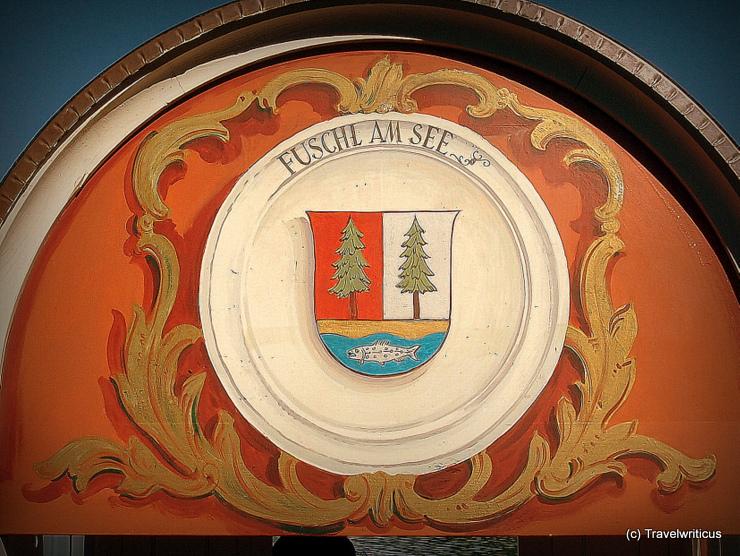
Fuschl am See in the Austrian region of Flachau is known for a lake which provided the court of the Archbishops in Salzburg with fresh fish. Its town arms display two trees and a fish.
You only see what you know (Goethe)

Fuschl am See in the Austrian region of Flachau is known for a lake which provided the court of the Archbishops in Salzburg with fresh fish. Its town arms display two trees and a fish.
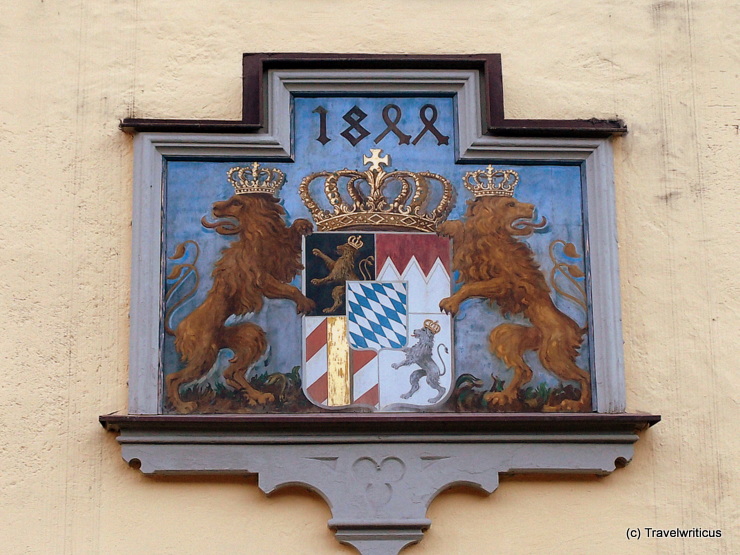
This coat of arms, seen at an old building in Schwangau, displays the coat of arms of the kingdom of Bavaria introduced in 1835. The date above the crown has to be read as 1844. In former times, the 4 had been written as half 8.
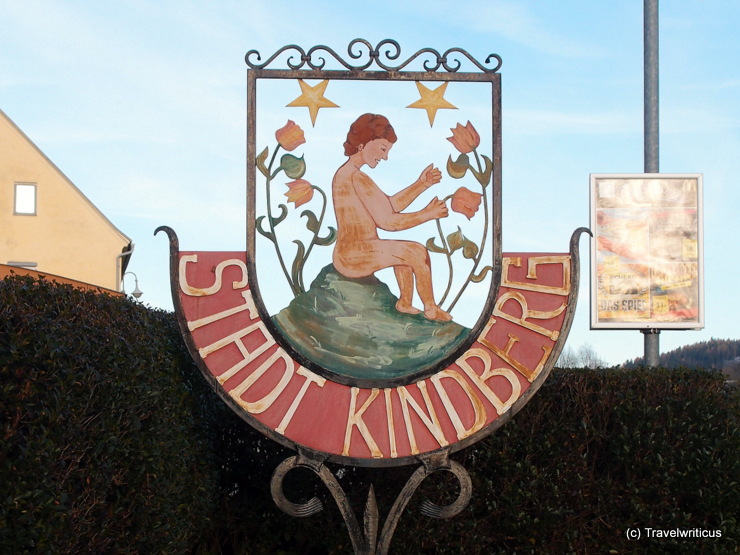
On my walk to an industrial heritage site next to Kindberg, I came across the city arms of Kindberg. I saw them at an unofficial town sign at the city boundary. The photo displays the inverted side of the city arms.
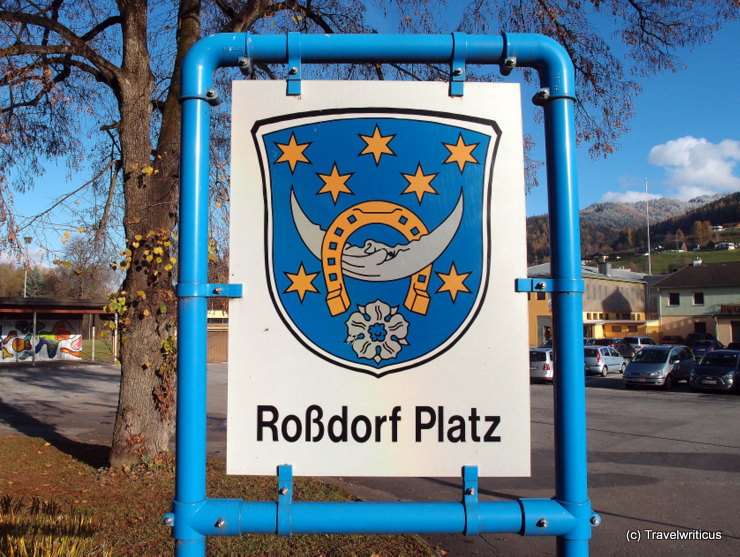
On my urban walk through Kindberg, I came across the coat of arms of Roßdorf. This is a place near Darmstadt in Germany. I love the dreamy moon in these city arms. Why is this coat of arms displayed in Kindberg? The simple answer is that Kindberg and Roßdorf are twinned.
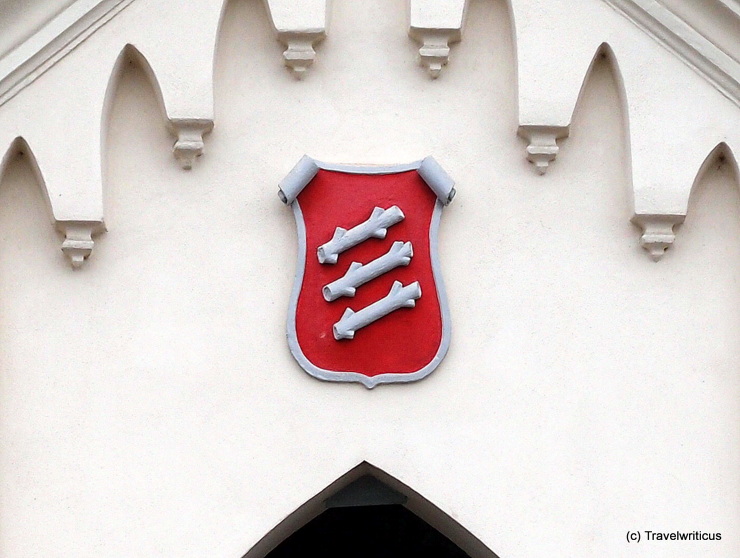
The city arms (Stadtwappen) of Knittelfeld display three white staves in a red field. The German term for a stave is Knüttel, which could be the origin for the name Knittelfeld. The depicted coat of arms one can find at the Lutherstiege, an old staircase at the former town walls of the city.
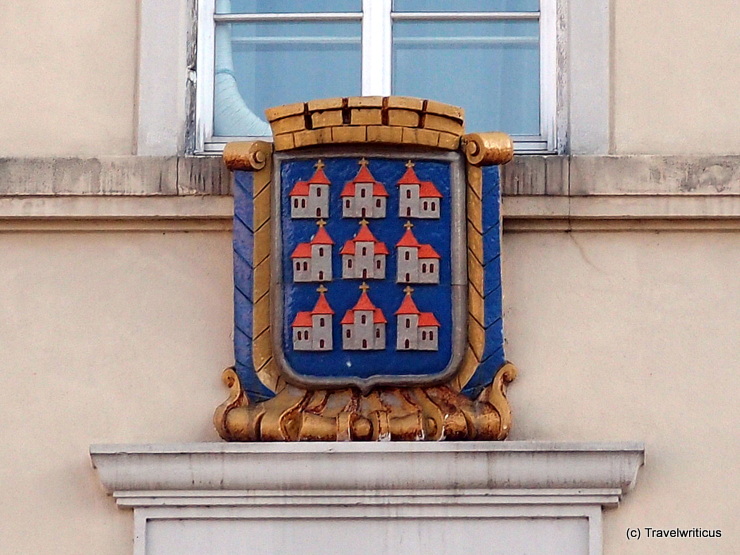
The coat of arms of Neunkirchen displays nine churches which refer to the meaning of the current city name (“Nine Churches”). Even though these city arms are a great example for canting arms the place was never known for nine churches. Actually the name origins from “new church”, a description which was used in the first mention of the place in 1094.
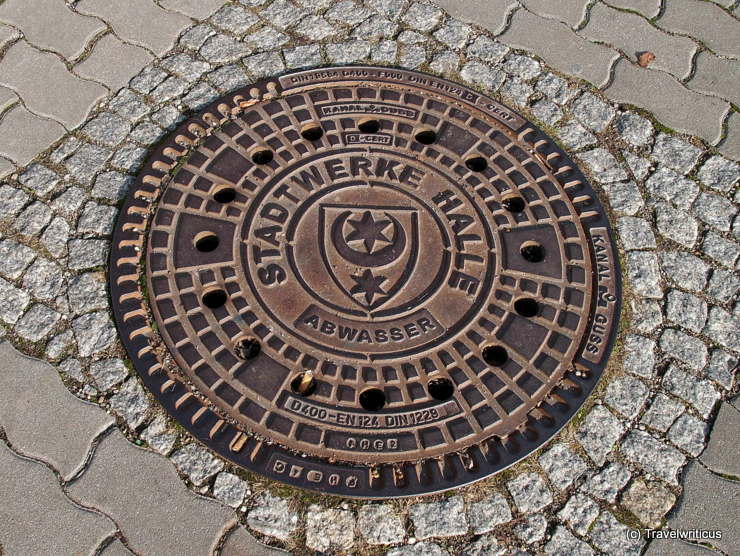
This manhole cover in Halle (Saale) displays the coat of arms of the city. The city arms of Halle consist of a moon between two stars of different size. The colour of these symbols is red; the ground is silver.
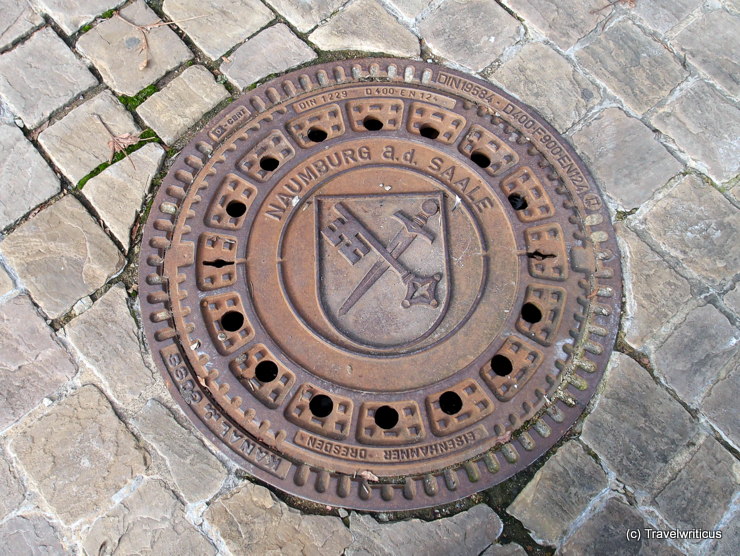
This manhole cover in Naumburg (Saale) displays the city arms. Interesting detail: Since 1993 the sword lays over the key. This manhole cover shows the older coat of arms with the key positioned over the sword.
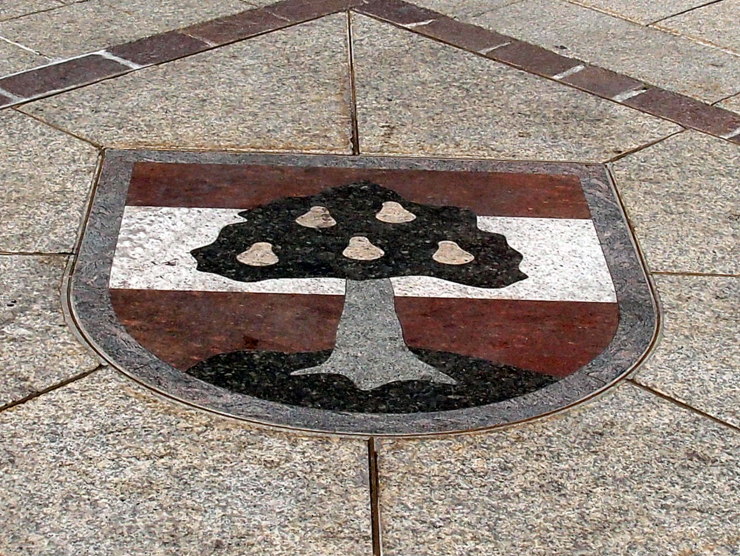
The town coat of arms of Dornbirn displays a pear tree. The symbol of a pear tree refers to the -birn in the city name as the German term Birne stands for the fruit of a pear tree. In marked contrast to this interpretation the name Dornbirn origins from torrin puirron, how the place was called in a 9th-century document.
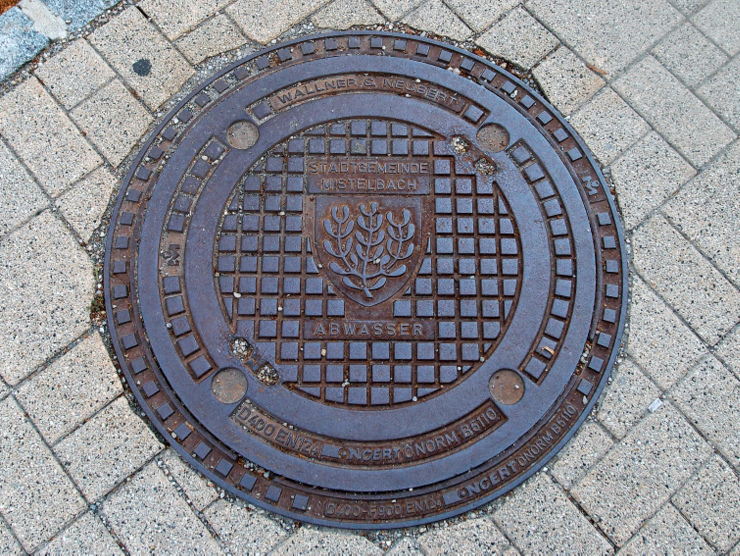
The manhole cover of Mistelbach shows a sprig of mistletoe, which is also depicted in the city arms. The term ‘Mistel‘ in the city name is actually the german term for a mistletoe.
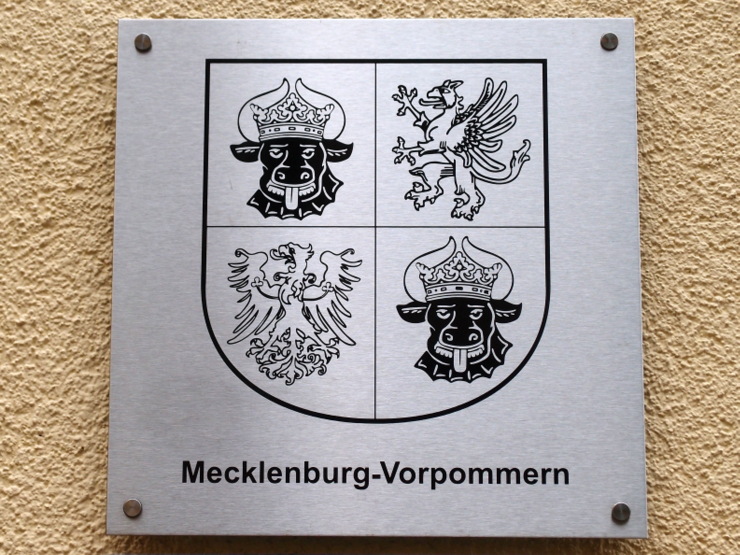
The federal state of Mecklenburg-Vorpommern was formed by a merger of two countries after World War II. The historic regions of Mecklenburg and Vorpommern got together, evoking the need of new coat of arms.
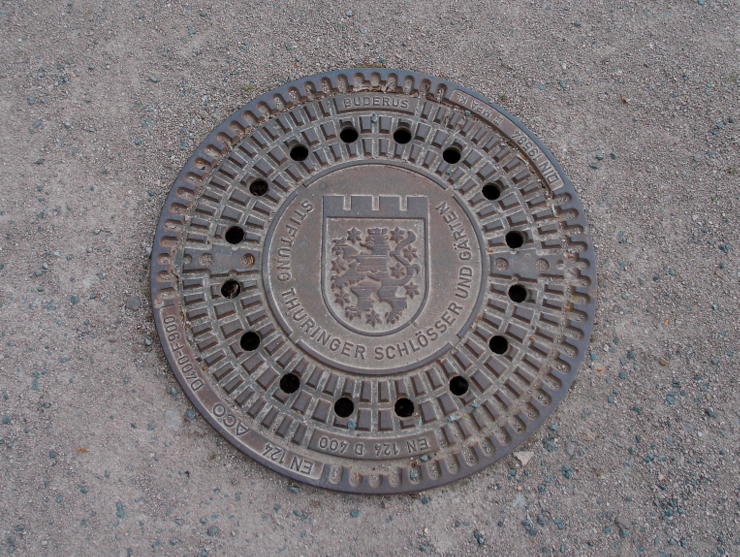
This manhole cover near Friedenstein Castle (Schloss Friedenstein) in Gotha shows the coat of arms of Thuringia. The inscription promotes the foundation “Thüringer Schlösser und Gärten“. This foundation cares for about thirty castles, monasteries and parks in Thuringia. The main office of the foundation is at Heidecksburg Castle. [German]